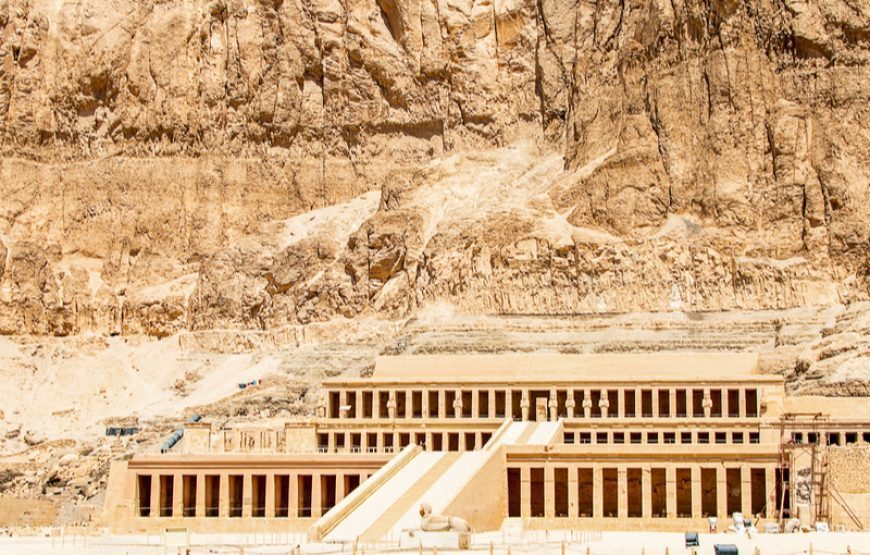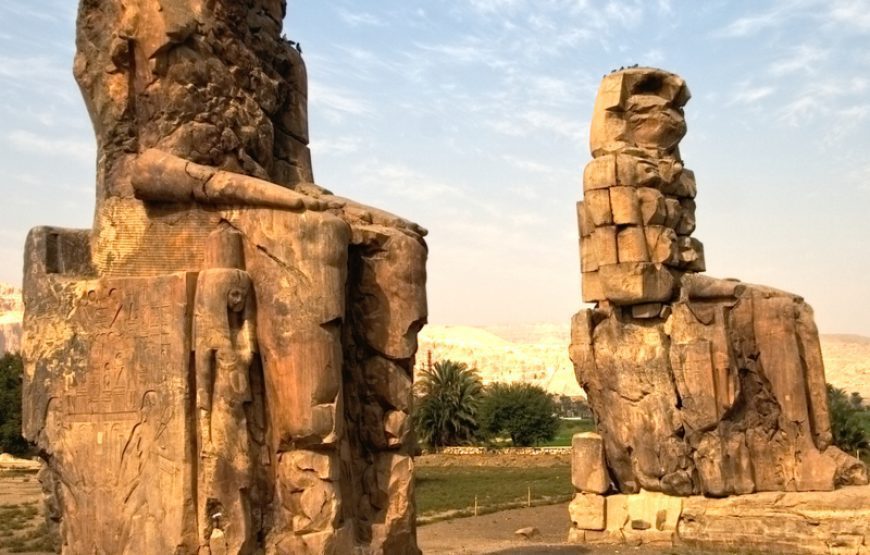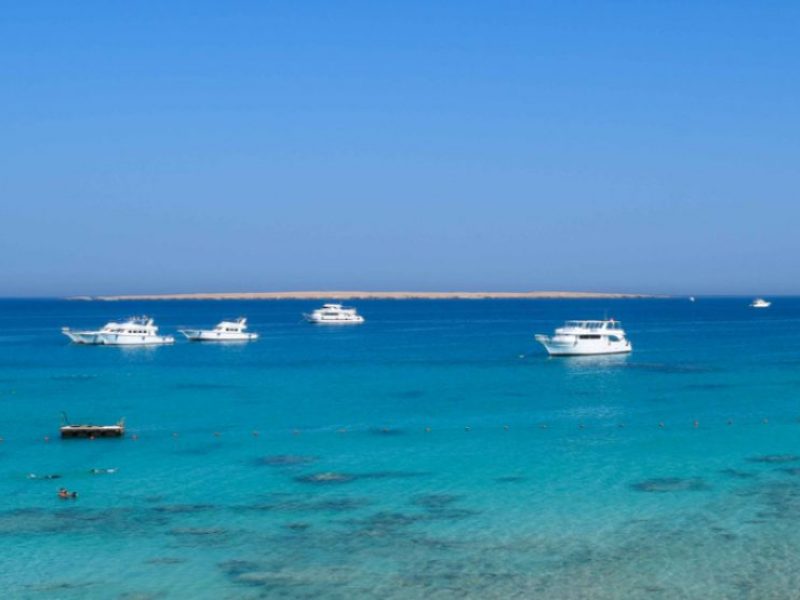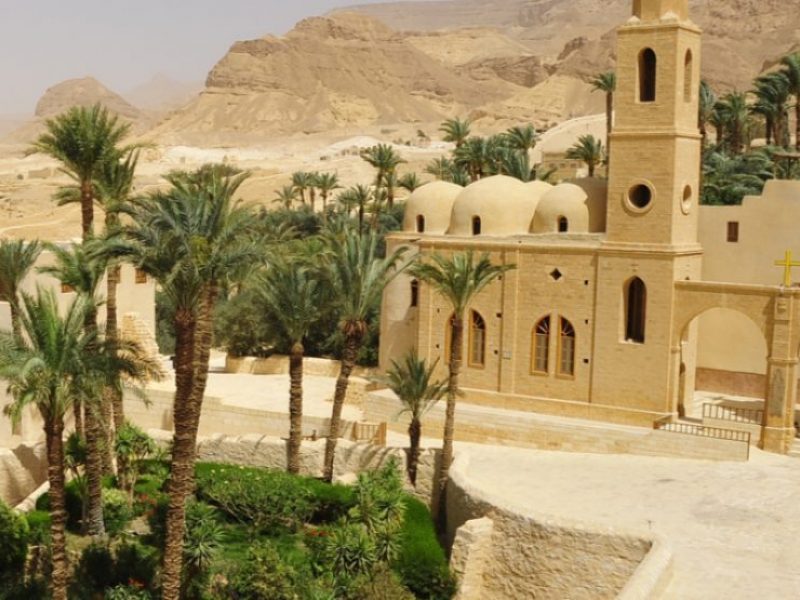For our Luxor tours to Luxor East Bank and Luxor West Bank to the most impressive Luxor sights, we pick you up early in the morning from your accommodation or Nile Cruise in Luxor. Our experienced Egyptologist will first guide you towards the famous.
Karnak Temple
Karnak temple, considered to be one of the largest Temple Complexes in human history, welcomes you at the entrance with its wonderful Sphinx Alley and after entering the temple complex with the high pillars of the famous pillared hall. Our Egyptologist will explain to you the masterpiece of this temple construction. The stones that were used for its construction came from the quarries in the south of Egypt over the Nile River to Luxor. Inside the Karnak Temple complex, with its several temples, is an obelisk weighing around 300 tons. His sight and size let us wonder how the people in Ancient Egypt managed to create these massive monuments.
After the fascinating tour through Karnak Temple, we visit the “Holy Lake” on the edge of the Temple Complex, which is still full to the brim. Here ceremonial ablutions were held in Ancient Egypt. From here we make our way to the next stop on our Luxor day tour, the
Luxor Temple
The famous Luxor Temple used to be connected to the Karnak Temple by a processional path, which today is restored, after many years of restoration work. We visit the Temple along the beautiful promenade of Luxor. The Luxor Temple was not used for worship like the Karnak Temple but as a coronation temple.
Alexander the Great had the former 4 pillars that supported the roof removed and built a chapel. In Roman times the Luxor Temple served as a fortress. Only in the first century AD, 4 churches were built on its site, of which only ruins remain today. We walk through the beautiful arcades of the sanctuary to leave the Luxor Temple for the trip to Luxor West Bank. One of the first stops on the opposite side of the Nile River is the
Colossi of Memnon for a photostop
The guardians of the Mortuary Temple of Amenhotep III are standing very lonely at the entrance of the valley in the rocky mountains on Luxor West Bank. The Memnon Colossi were once known for their singing during windy weather. Restoration work silenced the “voices” of the colossi, as gaps through which the wind was blowing were closed. Today the impressive colossi are the perfect backdrop for some photos.
After a short stop, we continue to a traditional restaurant on Luxor West Bank for a lunch break. Then the
Hatshepsut Temple
is already waiting for us. Hatshepsut, the only female ruler of Egypt, had this architectural masterpiece built at a particularly strategic location in the rocky mountains of Luxor West Bank. The Hatshepsut Temple, with its many steps, offers on the one side a breathtaking view over the River Bank of the Nile and is from the other side secured by the walls of rock. For over 20 years, Hatshepsut was ruler over Egypt. To this day, the terraced Temple can keep up with most of the modern construction methods. At the top of the Temple, you will be surprised by the well-preserved reliefs that decorate the masonry. Our Egyptologist is always available to answer any questions you may have about the history of the Hatshepsut Temple. From here, we start to the last attraction of our Luxor day tour, the
Tombs in the Valley of the Kings
Valley of the Kings is one of the most spectacular places to visit in Luxor. More than 65 famous tombs have been discovered so far, and you will visit 3 of them with us. We are happy to help you choose the best 3 of them. The most famous tomb in Valley of the Kings is the famous Tutankhamun tomb, which you can visit with the tomb of Seti I, Ramses 6, for a surcharge. After entering the tomb, the way will lead you into the depths of the rocky mountains. You will be overwhelmed by the well-preserved painting on the walls, which tell the story of the respective kings.







